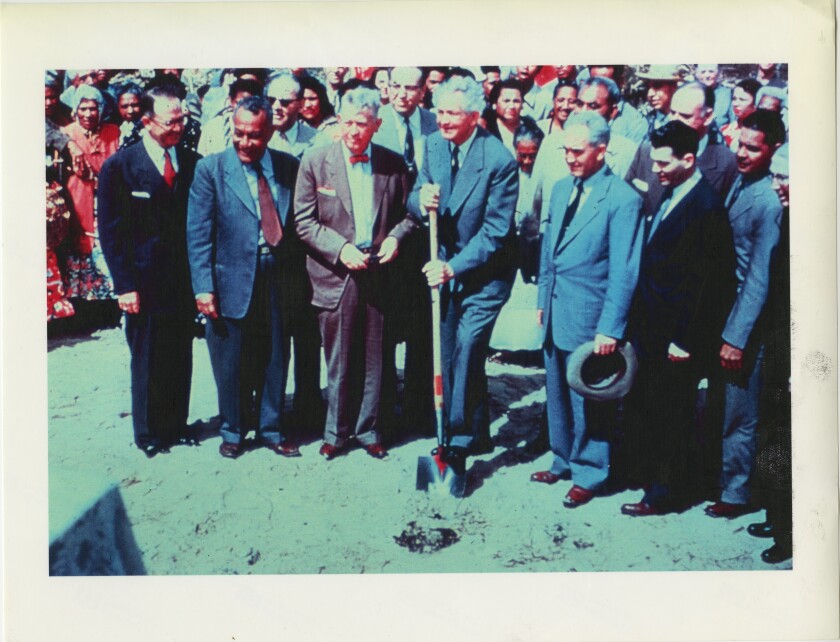
Brigham Young University–Hawaii celebrates its 70th anniversary in 2025, marking seven decades of academic excellence, spiritual growth, and cultural unity. Founded in 1955 in Laie, Hawaii, this unique institution has remained steadfast in its mission to educate students in an environment that fosters both intellectual and spiritual growth. From its humble beginnings to its current role as a beacon of global influence, BYU–Hawaii’s history is one of learning, light, and the spirit of aloha in its enduring impact.
1955-1965: Building Foundations

BYU–Hawaii began as the Church College of Hawaii, with the groundbreaking ceremony led by President David O. McKay on February 12, 1955. The first class of 153 students entered in September 1955, and the institution quickly gained recognition for its commitment to providing education for students from the Pacific Islands and beyond. The Polynesian Cultural Center (PCC) opened in 1963, offering students employment opportunities while preserving and showcasing the diverse cultures of Polynesia. These foundational years established BYU–Hawaii as a cultural and educational hub in the Pacific.
1966-1975: Expanding Horizons
The college’s second decade saw significant growth and development. In 1974, the Church College of Hawaii officially became Brigham Young University–Hawaii, aligning with its sister institutions in Provo, Utah. This period also saw the completion of the Cannon Activities Center, which became a central gathering place for spiritual, academic, and cultural events. With an increasing number of international students, BYU–Hawaii solidified its reputation as a global institution dedicated to creating Christlike leaders who serve their communities.
1976-1985: Cultural Connections and Academic Excellence

BYU–Hawaii entered its third decade with a continued focus on academic and spiritual development. The Seasider sports teams brought pride to the university, excelling in athletics and fostering school spirit. The introduction of Pacific Studies as a major in the 1980s reflected the university’s commitment to preserving and studying the rich heritage of the Pacific region. By the end of this decade, BYU–Hawaii had established itself as a vibrant center for cultural exchange and scholarly achievement.
1986-1995: A Beacon of Light
This decade was marked by technological and academic advancements. In 1988, BYU–Hawaii hosted its first satellite broadcast devotional, connecting students to Church leaders worldwide. The university also expanded its academic offerings, including new programs in computer science and international business. The Polynesian Cultural Center celebrated its 30th anniversary in 1993, reaffirming its role as both a cultural institution and an incredible partner to BYU–Hawaii, providing hundreds of students with work experience each semester.
1996-2005: A Global Vision
As the new millennium approached, BYU–Hawaii embraced a global vision. President Eric B. Shumway’s leadership emphasized the university’s role in preparing students to lead in a rapidly changing world. The Jonathan Napela Center for Hawaiian and Pacific Studies was established, providing a platform for research and education on Pacific Island cultures. The university also launched initiatives to improve student access to technology, including campus-wide internet connectivity.
In 2003, the university celebrated the 40th anniversary of the Polynesian Cultural Center with a year-long celebration. The PCC’s role as a cultural ambassador for Polynesia and a source of student employment continued to grow. These years laid the groundwork for BYU–Hawaii’s ongoing global leadership and service commitment.

2006-2015: Transformation and Growth
BYU–Hawaii underwent significant changes during this decade, beginning with the groundbreaking of the Heber J. Grant Building in 2011. This 41,000-square-foot facility became a cornerstone of the university’s campus modernization efforts. In 2012, the Nine Semesters in Residence program was introduced to improve efficiency and serve more students.
The university also excelled in extracurricular achievements. The women’s tennis and volleyball teams reached national championships, while the Enactus team earned national recognition for its innovative projects. In 2015, the university celebrated its 60th anniversary with a year-long series of events, culminating in the announcement of John S. Tanner as the new president of BYU–Hawaii.
2016–2025: Spirit of Innovation

In 2020, the global COVID-19 pandemic required the university to adapt swiftly, transitioning to remote classes while ensuring the health and safety of its community. That same year, BYU–Hawaii welcomed President John S.K. Kauwe III, the university’s first president of Native Hawaiian descent. In 2021, BYU–Hawaii enhanced its commitment to accessible education by partnering with BYU–Pathway Worldwide. This collaboration offers priority admission consideration to students from the target area who have completed PathwayConnect or obtained a certificate or associate degree through BYU–Pathway. This initiative aligns with BYU–Hawaii's mission to prepare students from Oceania and the Asian Rim to be lifelong disciples of Jesus Christ and leaders in their communities.
The university’s focus on growth and innovation continued with the dedication of the new Science Building in 2022, featuring state-of-the-art labs and classrooms. In that same year, a comprehensive renewable energy system was completed, marking a significant step toward sustainability. In 2024, the Iosepa returned to the sea during the Festival of Pacific Arts & Culture (FestPAC), symbolizing BYU–Hawaii’s commitment to preserving Polynesian heritage. More recently, renovations began on the Joseph F. Smith Library in late 2024, with plans to replace the McKay Building over the next five years.
A Legacy of Aloha
As BYU–Hawaii looks to the future, it remains rooted in its mission to prepare students to become leaders in their families, communities, and countries. The university’s commitment to excellence, spiritual growth, and cultural understanding ensures that it will continue to be a beacon of light and learning for future generations. From its first class of 153 students to its current global reach, BYU–Hawaii’s story is one of faith, perseverance, and aloha, creating disciples of Jesus Christ worldwide.

As we reflect on the rich history and legacy of BYU–Hawaii, we invite you to be part of a special celebration honoring 70 years of faith, learning, and aloha from February 10–February 12, 2025.
Come and enjoy a series of exciting events, including performances, time capsules, and opportunities to serve and reconnect with the BYUH ‘ohana. Let’s celebrate the impact of this university and the bright future ahead!
For a full schedule and event details, visit Alumni Relation's website.
